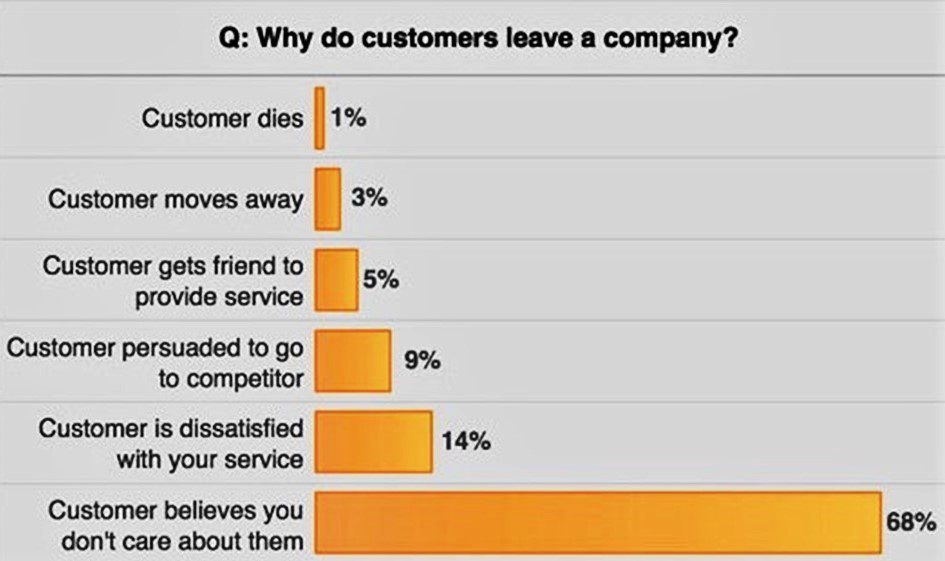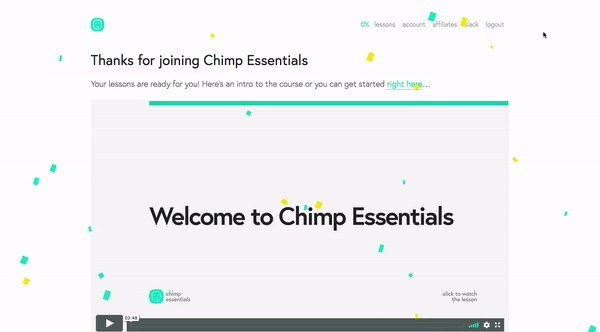SaaS Retention is more than a product game, it’s a relationship game
SaaS retention, when it’s done right, Brain Balfour argues, can impact acquisition, monetization, and virality, making it one of the most powerful ways that you can accelerate growth and maximize revenue.
How do you improve customer retention, though?
We believe there are two sides to this question.
The first, more familiar side, is from the perspective of your product.
Improving customer retention, as far as your product is concerned, is building product engagement, Lincoln Murphy argues. He’s right. Engagement is a pulse on whether you’re building quotidian value over time. “The biggest churn threat you can monitor for is when your customers are not fully-engaged with your SaaS,” he writes.
(If you’re trying to figure out how to build product engagement, check out this post on what metrics you ought to be paying attention to and why.)
Product engagement is not the whole picture of what it takes to improve retention, though.
From customer support to subscription flexibility, what kind of relationships are you building outside your product?
As features become less and less of a differentiator in a saturated market, it’s important to think about the relationship your customers have with you, and not just the relationship they have with your product.
TL;DR: If you want to improve customer retention there are two questions you should be asking:
- First, ‘am I building an engaging relationship with my product?’
- And, second, ‘am I building an engaging relationship outside my product?’
“People buy relationships, not products”, David Cancel says.
And the Rockefeller Corporation backs him up. These are the results of a survey they conducted in 2010:

Part 1: Subscription experience and why it’s the key to an engaging relationship
Here’s the problem.
The breadth of a customer relationship is pretty mind-boggling when you think about it. From that very first touchpoint — whether it was a blog, a conversation on a forum where you came up, or an ad that resonated with them — to their present interactions with you.
Considering how nuanced these relationships are, the question of whether you’re building an engaging relationship outside your product is as complex as it is scary.
Approach it in the same tactical way you would product engagement, we suggest.
When thinking about how users engage with your product, you use a framework to divide them so that you can learn what’s working for each cohort.
Amplitude calls this the Retention Lifecycle Framework.
- Look at new users who are engaged with your product to figure out what you need to improve as far as your first impression goes.
- Currently engaged users will tell you what’s working and what’s not.
- Look at the engagement of users who’ve left the product only to come back later to figure out what sets you apart in the market and double down on it.
When it comes to engagement outside your product, you can divide customers up (roughly) in the same way. The only difference is this: engagement inside your product demands you look at what’s going right, engagement outside of it requires you look at what’s going wrong.
Talk to every customer who cancels. We guarantee that for all the churn that’s a result of your product, there is some that’s the result of something outside of it.
- Customers who churn before they open your product up can tell you when your first impression or initial value delivery (via sales or freemium) is not resonating.
- Customers who are using your product and liking it but are complaining about their experience outside of it can tell you where subscription pain points are.
- Customers who are happy with your product but left anyway will tell you when technicality is breaking experience (it could be anything from a failed payment to website downtime).
Taking an active approach to building your subscription experience can help you build an engaging relationship outside your product.
To illustrate, take the example of customer support response time.
Everyone hates waiting, and a quick response can turn the tables on an average experience. It’s a metric that has got nothing to do with the quality of the support or quality of the product.
If you’re wondering what the average response time for SaaS companies is, it’s around 20 and 24 hours. But a few companies respond (10% from the study cited) within the first hour of writing. And customers notice.
It’s as straightforward an example of subscription experience as one can find.
Part 2: Building relationships with subscription flexibility
When it comes to building your subscription experience, your subscription management system (we are going to use this synonymously with ‘billing system’, here’s our argument for why that’s okay) can help in two crucial ways.
First, it can offer enough subscription flexibility that a customer request (and consequently, a customer relationship) doesn’t throw your development team into a loop.
There’s no doubt that accommodating a customer request will earn you some brownie points as far as your relationship goes. Sometimes, it’s just impossible to pull off, though, because of the back-end wrangling it necessitates.
Think of a change as simple as a request for an additional charge on an invoice.
If you don’t support add-ons as a part of your recurring billing flexibility, this simple subscription change means rewriting parts of your billing code so that you can actually add the charge, yes. But it also means rewriting parts of your code so that: you only add it once, make sure it doesn’t affect your other subscriptions, make sure it doesn’t affect your automated invoices, and make sure it’s a scalable enough process to repeat if another customer asks for something similar. The list goes on.
The list of ‘things you have to think about to make this change’ gets more and more concerning as the changes get more and more complex. Tax support, accepting payments in multiple currencies, accepting multiple payment methods. Good SaaS billing is damn hard planning, in short.
With a billing system working alongside your product, you can rest assured that a subscription request never results in churn.
1. Let your customer pay the way they want to
Customers demand convenience. And choice.
The 2017 Health of Cash Study conducted by Cardtronics states that about 7 out of 10 make payment decisions depending on which available payment method is the most secure.
One more. In a survey conducted by YouGov, about 55% of online shoppers indicated that they would cancel their purchase if their preferred payment method isn’t available.
And here’s the catch — not all your customers will opt for the same payment method, especially if you’re going global.
Adyen, one of the most popular payment platforms in the world that supports about 200 payment options and 150 currencies, released this chart of the most preferred payment methods across countries:

While the demand for global payment options like international cards and PayPal drastically vary from one country to the next, local payment options have an even stronger foothold in their corresponding markets (like QIWI in Russia and Sofort in Belgium).
In addition, with about 15% of recurring credit card payments declined on average, offering alternative payment options will come in handy for your customers to fall back on if the first payment method fails.
A billing system can help by giving you the infrastructure you need to 1) effortlessly cater to the diverse payment preferences of your customers and 2) manage the different payment methods in one single place. (You can read about how offering multiple payment options helped the customer-centric business, Freedom, boost its conversion rates by 33% and enabled it to “open up to the global market“.)
2. Don’t let a failed payment get in the way of a customer relationship
We’ve always found the phrase ‘involuntary churn’ to be oxymoronic. How do you end up losing customers if they enjoy using your product and want to keep going?
“Involuntary churn creeps into your business silently.” Patrick Campbell writes, “It goes to work in the background, stripping away your customers, revenue, and growth.”
We often talk about ‘failed payment rates’ and ‘revenue recovery’ in the same breath as involuntary churn but the truth is involuntary churn is way more dangerous than either of them.
What if that one customer who wanted to stay on (and couldn’t) could have been an advocate two months down the line?
There are too many relationship ‘what ifs’ to let something as small as a payment failure get in way of your delivering value to someone.
This is why a billing system is built to minimize card declines and failed payments — it helps you be flexible enough to accommodate a payment failure or a card decline, should it happen at an inopportune moment.
Let the payment failure lifecycle illustrate. It looks something like this.
- Sending out an invoice
- Payment due
- First try failed
- Payment retries
- Dunning emails and
- Post dunning action
If you can plan for a payment failure before an invoice goes out, you can put tactics in place across the payment failure lifecycle (with your billing system) that work like a multi-layered sieve — together — with some catching payments that the others failed to.
Here’s a list of 20+ tactics that you can implement across the payment failure lifecycle.
3. Use a customer self-service to offer flexible subscription management
Billing systems come equipped with customer self-service portals.
They’re meant to be a one-stop shop. A single place where customers can see and make changes to accounts, payment information, and subscriptions (including upgrades or downgrades).
As relationships go, they’re a win. Here’s why:
- Self-service eliminates all the waiting that might otherwise be inevitable for a subscription change.
- A self-service portal is easy to use and beats raising a ticket for assistance.
- It presents an opportunity to offer customized promotions (compared to the conventional cross-selling/up-selling emails, offering personalized promotions to your customers through the portal is far more effective).
Part 3: Building relationships by bringing context to every conversation
Second, a billing system can bring crucial context to your customer communication.
Think of the relationship you have with a close friend, someone you’ve known for years. Think of the shared experiences, the inside jokes, the close calls, the fireside chats.
The cornerstone of a strong recurring relationship is context.
In the early days of a subscription business, where you’ve got a small team handling the entire customer journey, context is easy.
But this can change quickly.
Growing means going from a place where one team is responsible for customer relationships in their entirety to a place where different teams and multiple people are responsible for the different stages of the customer lifecycle.
Context doesn’t scale in the same way that processes do.
With growth comes the need to draw lines of responsibility, streamline workflows, and avoid snags in communication. The problem is that this usually comes at the expense of context.
A billing system can help bridge a few of these contextual gaps.
Let’s dive into the how.
4. Integrate your billing system with your tech stack for customized support
Bringing context to every conversation you have is difficult because the different tools that different teams use are built for depth, not breadth.
And they’re impossible to avoid — each tool is built to solve a specific problem extremely well, which is probably why there are so many of them.
The problem with using so many tools to handle customer data is that, sometimes, it can result in communication errors.
Customers are channel-agnostic — they look for a consistent experience across all the touchpoints.
And one of your biggest challenges will be to become channel-agnostic yourself and adopt an approach where data from the various tools come together to give you a customer journey-centric perspective.
Thinking about customers in terms of ‘leads’ and ‘prospects’, ‘tickets’ and ‘referrals’, it’s easy to forget that a single relationship could tick all of these boxes for different teams at different times.
And a billing integration solves (a crucial) part of this problem.
By integrating your billing system with your CRM, helpdesk software, affiliate management solution and the rest of the tools, you can bring subscription and invoice information to bear on sales calls, customer support tickets, and customer success discussions.
5. Use data from the self-service portal to check-in with customers
Mikael Blaisdell, the director of the Customer Success Association, says a customer success specialist “needs to analyze a range of interaction data to detect patterns that indicate the actual health of the ongoing relationship between the customer and the company in time to do something about it when necessary.”
A self-service portal, which maintains customer records so you don’t have to (everything from account details, invoices, orders, due dates, and more) is a gold mine of the kind of interaction data he’s talking about.
When a customer changes preferences within the self-service portal, you can use it as an opportunity to:
- Act quickly on a change.
- Send exclusive content specific to a customer’s context.
- Check-in with a customer to see if everything’s okay (when a customer downgrades, for example).
6. Use transactional emails to build the customer relationship
In a survey conducted in 2017, Mailjet found that 93% of customers would consider moving to a competitor after a negative experience with transactional emails.
Transactional emails are opened two times more than their non-transactional counterparts and they boast a click-through rate that’s three times higher.
This spells opportunity. Opportunity to have meaningful conversations. Opportunity to offer personalized product recommendations and/or support. Opportunity to build and strengthen relationships.
Have you considered using a transactional email to check-in with a customer? Or sending them to a customized landing page that celebrates them choosing you?

For example, here are some ways to make transactional emails more contextual:
- Celebrating milestones
- Offering personalized suggestions for features/add-ons
- Sharing resources
- Proactively suggesting helpful tips and solutions to snags
In conclusion
Improving SaaS retention calls for two questions: ‘Am I building an engaging relationship with my product?’ and ‘am I building an engaging relationship outside my product?’
The problem is the first question gets way more attention than the second.
For all the customers that churn out as a result of your product, there are some that churn out as a result of subscription experience.
When it comes to building an engaging relationship outside your product, there is no tool better suited to helping than your recurring billing system.
Even small subscription changes can result in tremendous billing complexity and a good billing system gives you all the flexibility you need to make sure a customer request (like an add-on service, or an advance invoice) doesn’t throw your development team a curveball.
On the other hand, sitting on the subscription and invoice data that it is, your billing system can fill critical gaps in customer information and bring ever-precious context to your communication.


